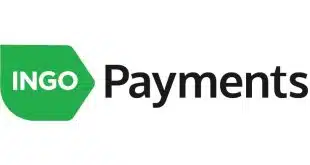One year after its creation, a database of merchants and processors that generate suspect automated clearing house transactions doesn’t have a whole lot of data yet. Backers of the Terminated Originator Database (TOD), however, expect the database to grow rapidly this year and next as word of the project spreads among banks and the database’s value increases with each new institution supplying it with information.
While some 350 financial institutions have requested materials on how to join the program, the TOD currently has only 45 participants, according to Andy Murphy, business system analyst at payment processor Fidelity National Information Services Inc. (FIS) and the database’s administrator. “I’d like to have 4,000,” Murphy tells Digital Transactions News.
ACH governing body NACHA conceived the TOD idea and selected FIS last year to administer the program, which financial institutions can access at low cost. The idea is for so-called originating depository financial institutions (ODFIs) to feed information into a central database about the accounts of their merchants and processors that originated ACH files but whose accounts were closed because their transactions generated excessive returns or otherwise proved to be risky. In that way, other ODFIs in the process of evaluating merchants and processors for risk could tap the database and learn if a prospective client presents a risk for returns.
At least two reasons account for TOD’s slow growth so far, according to Murphy and two other panelists who discussed the program Monday at NACHA’s annual payments conference in Baltimore. First, NACHA does not compel ODFIs to report their account closures. Nor does NACHA require banks to check the TOD before booking a merchant or processor that will submit transactions from many merchants. Risk decisions remain with ODFIs. In contrast, credit and debit card merchant acquirers are required to participate in a program that includes a database of closed merchant accounts.
“The Terminated Originator Database is not an end-all, be-all,” said panelist Chrystina M. Giorgio, senior vice president of operations at Olney, Md.-based Sandy Spring Bank and a NACHA board member. “It is a tool…this isn’t a blacklist. This is a business decision for your institution.”
Second, while risk-control executives at big banks have expressed interest in the TOD, so far such banks have been reluctant to join because of legal concerns about contract language, including liability and terms, according to Murphy. Most of the current participants are smaller institutions. “Larger financial institutions, as excited as they are about this, sometimes their legal departments do a hiccup,” he says.
Still, Murphy expects the TOD to start attracting more participants soon. “My projections are 250 by the end of 2012 and 1,000 by the end of next year,” he says. “It’s a long-term project.”
ODFI are asked to provide a number of data points about a terminated account, including legal business name, ownership, address, and taxpayer identification number. They also are asked provide reasons for account termination, which could include excessive returns, law-enforcement action, or insolvency.
The TOD’s cost to a bank is determined by asset size and pricing plans based on a transaction or subscription basis, or a mix of both. A bank with less than $1 billion in assets could begin using it for as little as $25.





